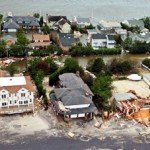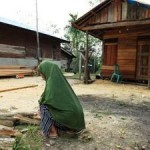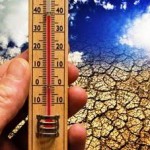Tropical Cyclones:
Global tropical cyclone activity for the first ten months was near the 1981-2010 average of 85 storms, with a total of 81 storms (wind speeds greater or equal than 34 knots, or 63 kilometers per hour). The Atlantic basin experienced an above-average hurricane season for a third consecutive year with a total of 19 storms, with ten reaching hurricane status, the most notably being Hurricane Sandy, which wreaked havoc across the Caribbean and the USA East Coast. Throughout the year, East Asia was severely impacted by powerful typhoons. Typhoon Sanba was the strongest cyclone, globally, to have formed in 2012. Sanba impacted the Philippines, Japan, and the Korean Peninsula, dumping torrential rain and triggering floods and landslides that affected thousands of people and caused millions in U.S. dollars in damage.

Background
The provisional statement is being released at the 18th Conference of the Parties to the United Nations Framework Convention on Climate Change, taking place in Doha, Qatar. Final updates and figures for 2012 will be published in March 2013. It is based on climate data from networks of land-based weather and climate stations, ships and buoys, as well as satellites. The WMO global temperature analysis is thus principally based on three complementary datasets. One is the combined dataset maintained by both the Hadley Centre of the UK Met Office and the Climatic Research Unit, University of East Anglia, United Kingdom. Another dataset is maintained by the National Oceanic and Atmospheric Administration (NOAA), and the third one is from the Goddard Institute of Space Studies (GISS) operated by the National Aeronautics and Space Administration (NASA). Additional information is drawn from the ERA-Interim reanalysis-based data set maintained by the European Centre for Medium-Range Weather Forecasts (ECMWF).
The World Meteorological Organization (WMO) is the United Nations System’s authoritative voice on Weather, Climate and Water.
Source: WMO.















